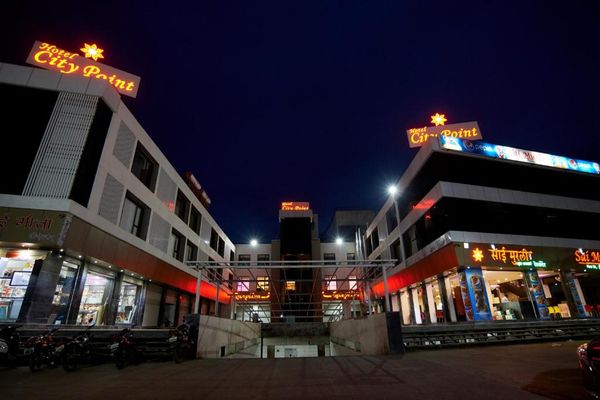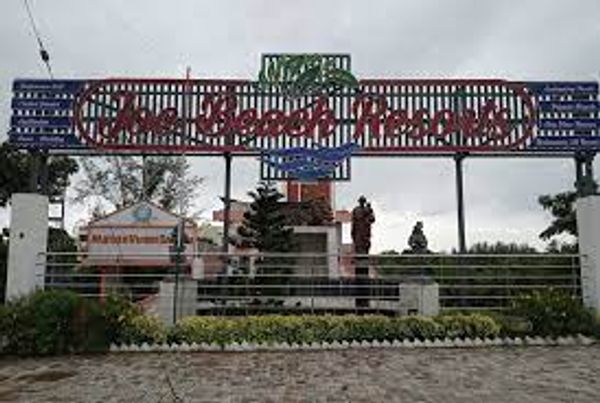Navigating Small German Cities Without a Car: A Practical Guide
 Mark Wood
19 Aug, 2025
11 mins read
52
Mark Wood
19 Aug, 2025
11 mins read
52

Germany’s small cities offer a peaceful charm, steeped in history and character, that rivals the larger metropolises. While big cities like Berlin and Munich have well-known public transit systems, smaller German towns and cities like Osnabrück, Bamberg, or Freiburg are just as accessible—even without a car. Whether you're a tourist, student, or expat settling in, this guide will walk you through how to comfortably navigate these smaller cities using public transportation, cycling, and other convenient methods. And no, owning a vehicle is not required.
Why Avoid a Car?
Let’s begin with the obvious question: why go car-free? While having a car might seem convenient, especially if you're unfamiliar with German infrastructure, many of the country's smaller cities are actually built to discourage driving. Narrow streets, pedestrian-only zones, high fuel prices, and limited parking can turn a vehicle into a burden rather than a benefit. In addition, Germany’s environmental policies increasingly favor sustainable transport, offering strong incentives for walking, cycling, and public transit use.
If you're planning a visit or long-term stay, going car-free is not only possible—it’s often the most practical option.
1. Public Transportation: The Backbone of Small City Mobility
In nearly every German city—regardless of size—you’ll find an efficient and reliable public transportation network. These typically include:
- Buses
- Trams (Straßenbahnen)
- Regional Trains (S-Bahn or RB/RE lines)
Let’s take Osnabrück as an example. The city’s local bus network connects nearly every neighborhood, including outlying residential areas and industrial parks. Buses run frequently during the day and often offer reduced service late at night. In many other small cities, like Göttingen or Tübingen, trams or light rail systems complement bus services.
You can purchase tickets directly from machines at stops, via mobile apps, or at kiosks near major stations. Most systems offer:
- Single Tickets
- Day Passes
- Weekly or Monthly Passes
Travelers should also take note of Landesweite Tarife, or state-wide tickets, which allow unlimited travel within certain regions. For instance, the Niedersachsen-Ticket covers all local trains and buses in Lower Saxony—including small towns like Osnabrück.
2. Cycling: Germany’s Silent Superstar
Germans love their bikes, and it shows. In cities both large and small, cycling infrastructure is taken seriously. Most towns have:
- Dedicated bike lanes
- Bike-only traffic signals
- Parking racks and bike garages
- Easy access to rental bikes
In fact, smaller cities often prove more bike-friendly than their larger counterparts. With less traffic, slower speed limits, and more compact layouts, a bicycle can get you anywhere in town faster than a car ever could.
Many cities offer bike-sharing systems, often integrated with local transit apps. DB Call a Bike, Nextbike, and other services allow you to rent a bike with your smartphone and return it to any station around town.
3. Walking: The Old-Fashioned Way Still Works
German cities—especially the smaller ones—are designed for pedestrians. Historic city centers (Altstadt) are often entirely car-free, filled instead with cobblestone streets, market squares, and boutique-lined alleys. Osnabrück, for instance, has an extensive pedestrian zone that lets you walk from the main shopping district to historical landmarks and cafés without ever needing a ride.
Distances are short, signage is clear, and safety is prioritized. You’ll find wide sidewalks, pedestrian bridges, underpasses, and plenty of benches for resting. Local maps are usually available at tourist centers, and many towns now feature QR-coded signs that offer directions via your phone.
4. Regional Rail for Longer Trips
Sometimes, you’ll want to visit nearby towns or take day trips. That’s where Germany’s regional train system shines. Smaller cities are often well-connected to regional hubs via:
- RegionalBahn (RB): Slower, more frequent stops
- RegionalExpress (RE): Faster, fewer stops
- S-Bahn: Suburban trains common in metro regions
You don’t need a car to explore the surrounding countryside, wine regions, or UNESCO World Heritage Sites. Trains are punctual, clean, and fairly priced. For group travel, many state-level tickets (like the Bayern-Ticket or Sachsen-Ticket) offer all-day rides for up to five people on regional services for a flat fee.
5. When Taxis or Ride-Share Make Sense
While public transport, cycling, and walking cover the majority of daily needs, there are moments when a direct ride becomes essential. For instance:
- Catching an early train or late-night flight
- Carrying heavy luggage
- Traveling with elderly companions
- Visiting a destination outside regular bus routes
In such cases, taxis are readily available—even in smaller cities. You can usually find them near train stations, central squares, or order them via phone or app.
If you're in Osnabrück, for example, Taxi Osnabrück is a reliable option for travelers looking to get around town without renting a vehicle. They offer local pickups, airport transfers, and even business-class services.
Ride-share options like Uber or Bolt exist in some smaller cities, but coverage may be limited. Always check availability in advance.
6. Mobile Apps to Simplify Your Journey
A smartphone can greatly enhance your car-free experience. Here are some essential apps that work well in small German cities:
- DB Navigator: For trains, regional buses, and timetables
- Google Maps: Offers real-time transit schedules and walking routes
- Moovit or Citymapper: Transit planning in major and minor cities
- Nextbike / Call a Bike: Bike rentals and station maps
- Local transit apps: Every city or state usually has its own app for ticketing, schedules, and service updates
With a few taps, you can check the next bus, compare walking vs. train times, or rent a bike—all without speaking German fluently.
7. Useful German Transit Terms
It helps to familiarize yourself with a few key words:
- Bahnhof – Train station
- Haltestelle – Bus/tram stop
- Fahrplan – Timetable
- Einzelfahrkarte – Single ticket
- Tageskarte – Day ticket
- Monatskarte – Monthly pass
- Gleis – Train platform
- Verspätung – Delay
- Abfahrt – Departure
- Ankunft – Arrival
Understanding these terms makes ticket machines, station signs, and announcements much easier to navigate.
8. Sustainable and Enjoyable
Choosing to go car-free in smaller German cities isn’t just practical—it’s environmentally responsible and culturally immersive. You’ll enjoy the scenery instead of focusing on directions, interact more with locals, and discover places that are easy to miss from behind a windshield.
You'll also be reducing your carbon footprint in a country that takes sustainability seriously. Many German towns have pledged climate neutrality by 2030 or sooner, and supporting their eco-friendly transport systems helps push those goals forward.
Final Thoughts
In Germany’s smaller cities, going without a car doesn’t mean sacrificing convenience. Quite the opposite—it opens up a richer, more grounded experience. With strong public transport, walkable neighborhoods, and plentiful bikes, mobility is seamless. And for those rare moments when you need a direct ride, services like Taxi Osnabrück ensure you’re never stuck.
Written By:
Mark Wood



Hotels at your convenience
Now choose your stay according to your preference. From finding a place for your dream destination or a mere weekend getaway to business accommodations or brief stay, we have got you covered. Explore hotels as per your mood.





